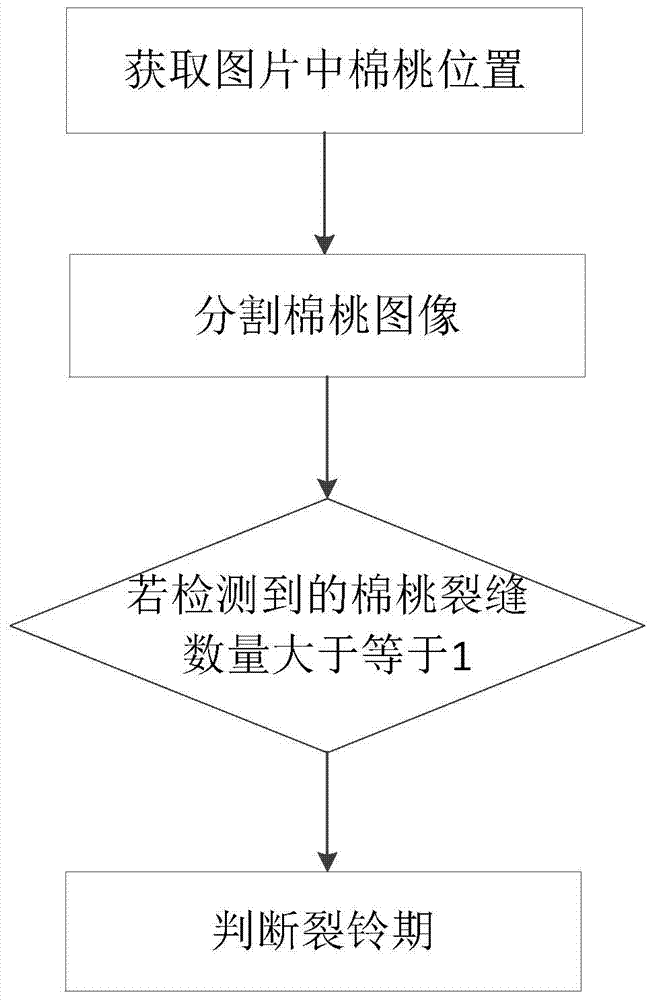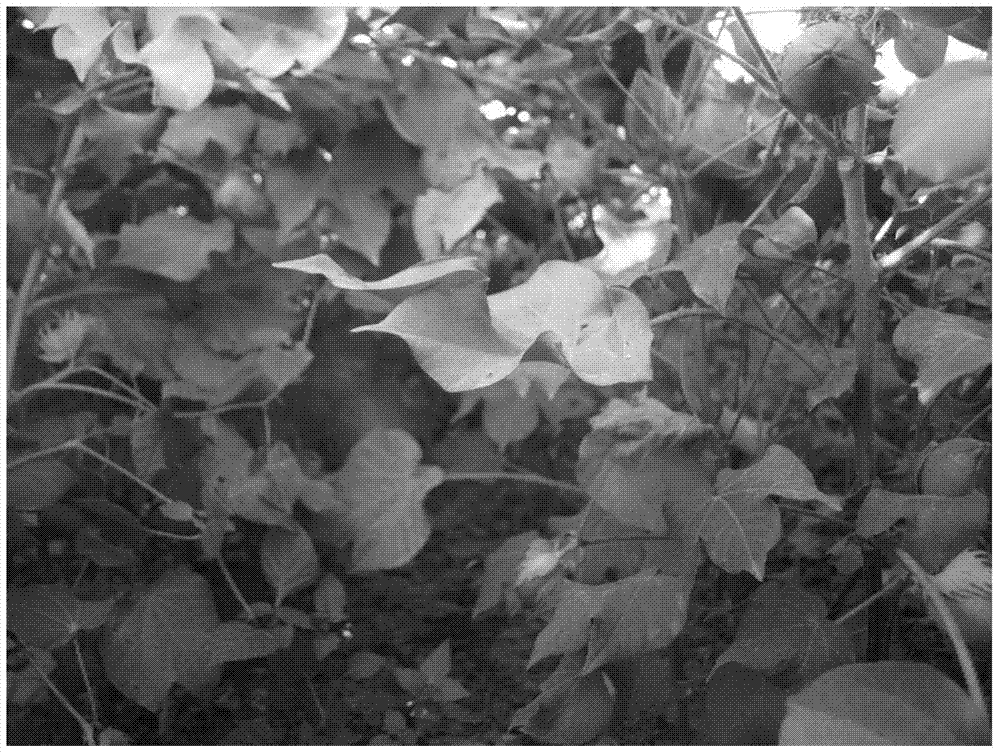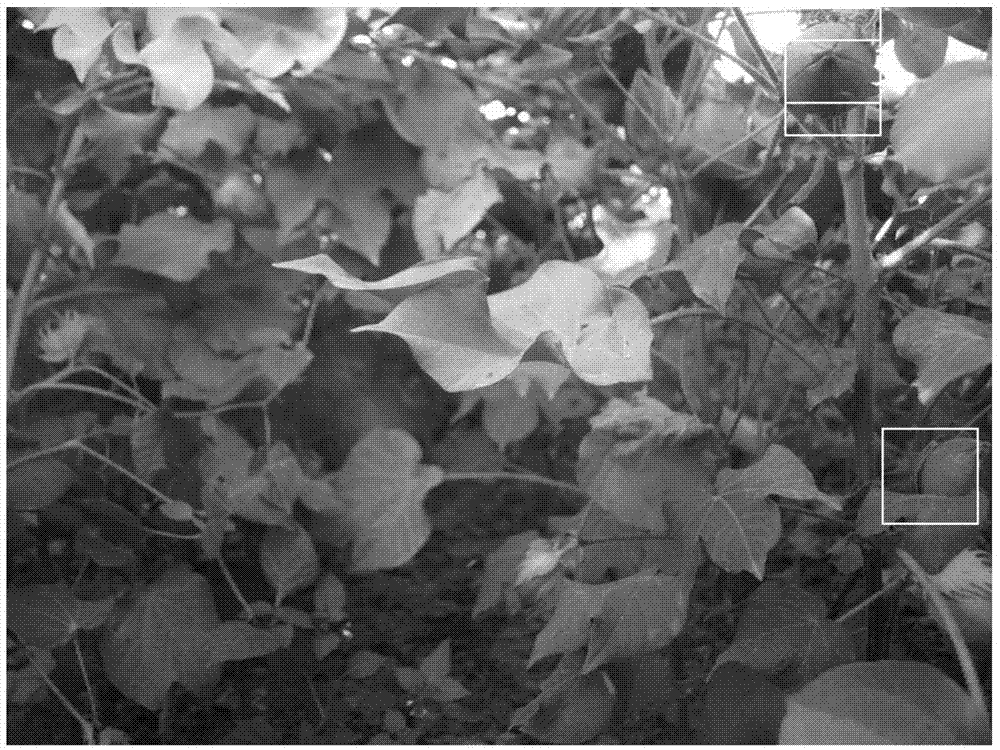Automatic detection method for cotton crack open stage
An automatic detection and bell period technology, which is applied in the intersection of digital image processing and agricultural meteorological observation, can solve the problems of large errors, long cotton growth cycle, time-consuming and labor-consuming, etc., and achieve high accuracy, unique characteristics, and information volume rich effect
- Summary
- Abstract
- Description
- Claims
- Application Information
AI Technical Summary
Problems solved by technology
Method used
Image
Examples
Embodiment 1
[0110] Build a cotton boll classifier:
[0111] First, a picture with a size of 90×90 pixels is selected as positive and negative samples for training. Among them, the positive samples are pictures of cotton bolls in different postures. The edges of the bolls in the boll pictures are clear and full, and the boll cracking can also be observed by the human eye; the negative samples are sub-image pictures of non-cotton bolls in the longitudinal front view of the cotton field.
[0112] Then, the SIFT feature quantity in the obtained positive and negative sample pictures is extracted, and the SIFT feature quantity is subjected to local constrained linear (LLC) encoding to obtain the positive training sample and negative training sample feature quantity input to the classifier.
[0113] Finally, use the support vector machine (SVM) as the classifier, select the radial basis (RBF) kernel function, input the feature quantities of positive training samples and negative training samples...
Embodiment 2
[0115] Using the method provided by the invention to judge figure 2 Whether the cotton in the box has entered the boll splitting period:
[0116] (1) Obtain the position of cotton bolls in the picture.
[0117] (1-1) Collect longitudinal front view image sequences of cotton fields.
[0118] The camera is 0.3 meters above the ground, the focal length is 14 mm, the horizontal shooting direction is north, the angle with the horizon is 0 degrees, and the resolution is 4 million pixels. figure 2 shown.
[0119] (1-2) Coarse search for the position of cotton bolls.
[0120] Firstly, the image obtained in step (1-1) is split to obtain sub-images of 90×90 pixels according to the order from top to bottom and from left to right, with a step size of 30 pixels. The boll classifier obtained in Example 1 is used to judge the sub-images to obtain the tag value of each sub-image. Set the coarse search threshold to be the boll classifier threshold when the false positive rate is between...
Embodiment 3
[0150] Using the method provided by the invention to judge Figure 8 Whether the cotton in the box has entered the boll splitting period:
[0151] (1) Obtain the position of cotton bolls in the picture:
[0152] (1-1) Collect images of cotton fields
[0153] The camera is 0.3 meters above the ground, the focal length is 14 mm, the horizontal shooting direction is north, the angle with the horizon is 0 degrees, and the resolution is 4 million pixels. Figure 8 shown.
[0154] (1-2) Coarse search for the position of cotton bolls.
[0155] Firstly, the image obtained in step (1-1) is split to obtain sub-images of 90×90 pixels according to the order from top to bottom and from left to right, with a step size of 30 pixels. The boll classifier obtained in Example 1 is used to judge the sub-images to obtain the tag value of each sub-image. Set the coarse search threshold to be the boll classifier threshold when the false positive rate is equal to 9%. Record the sub-image positi...
PUM
 Login to View More
Login to View More Abstract
Description
Claims
Application Information
 Login to View More
Login to View More - R&D
- Intellectual Property
- Life Sciences
- Materials
- Tech Scout
- Unparalleled Data Quality
- Higher Quality Content
- 60% Fewer Hallucinations
Browse by: Latest US Patents, China's latest patents, Technical Efficacy Thesaurus, Application Domain, Technology Topic, Popular Technical Reports.
© 2025 PatSnap. All rights reserved.Legal|Privacy policy|Modern Slavery Act Transparency Statement|Sitemap|About US| Contact US: help@patsnap.com



